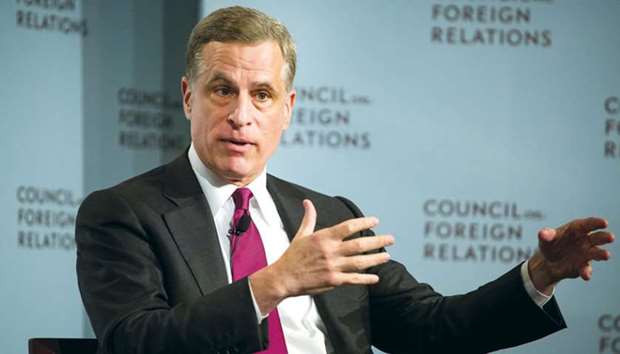The Federal Reserve should not raise interest rates again without confidence inflation is heading toward its 2% target, said Dallas Fed President Robert Kaplan, while Minneapolis’s Neel Kashkari said he opposed the central bank’s decision to hike this week because of recent softening in price pressures.
Their comments were the first public remarks by US central bankers following Fed chair Janet Yellen’s press conference on Wednesday to explain the Federal Open Market Committee’s decision to raise rates for the second time this year. Kaplan voted for the rate rise while Kashkari dissented, as he did against the Fed’s hike in March.
“If we base our outlook for inflation on these actual data, we shouldn’t have raised rates this week,” Kashkari said Friday in an essay published on the Minneapolis Fed’s website. “Instead, we should have waited to see if the recent drop in inflation is transitory to ensure that we are fulfilling our inflation mandate.”
In addition to raising rates, as had been widely expected, the Fed on Wednesday also unveiled plans to start slowly shrinking its balance sheet this year and updated forecasts showing that officials still have a third hike pencilled in for 2017. Even so, the FOMC acknowledged that inflation had been running somewhat below its target and said it was monitoring developments “closely.’’
A widely-tracked measure of the underlying inflation trend that excludes volatile food and energy prices declined to 1.7% last month, according to data released Wednesday by the Labor Department. The report marked a third straight month of surprise declines. Yellen told reporters after the FOMC meeting that “it’s important not to overreact to a few readings, and data on inflation can be noisy.”
Kaplan, who spoke later on Friday in Dallas, said he was open to arguments that weak inflation readings were transitory, but the consecutive monthly declines had attracted his attention.
“I’m not calling it a pause yet,” he told reporters after speaking to the Park Cities Rotary Club.
“But I’m basically saying that before I’d be comfortable taking the next step in raising the fed funds rate, I’m going to want to see more evidence that we’re making progress in reaching our 2% inflation objective.”
Investors see a roughly 40% chance of a third rate hike by the end of the year, according to pricing in federal funds futures contracts.
Yellen also cited a low unemployment rate as justification for the rate increase, referring to a relationship between the labour market and price pressures known as the Phillips curve, which she said “remains at work.”
Kaplan said the Phillips curve had flattened, while Kashkari criticised his colleagues for relying so much on an economic model that had been around for almost 60 years.
“The outcome that the current FOMC is so focused on avoiding, high inflation of the 1970s, may actually be leading us to repeat some of the same mistakes the FOMC made in the 1970s: a faith-based belief in the Phillips curve and an underappreciation of the role of expectations,” Kashkari said in his essay.
“In the 1970s, that faith led the Fed to keep rates too low, leading to very high inflation. Today, that same faith may be leading the committee to repeatedly (and erroneously) forecast increasing inflation, resulting in us raising rates too quickly and continuing to undershoot our inflation target,” he said.

Robert Kaplan, president of the US Federal Reserve Bank of Dallas, speaks at the Council on Foreign Relations in New York on May 31, 2017. Kaplan, who spoke on Friday in Dallas, said he was open to arguments that weak inflation readings were transitory, but the consecutive monthly declines had attracted his attention.
